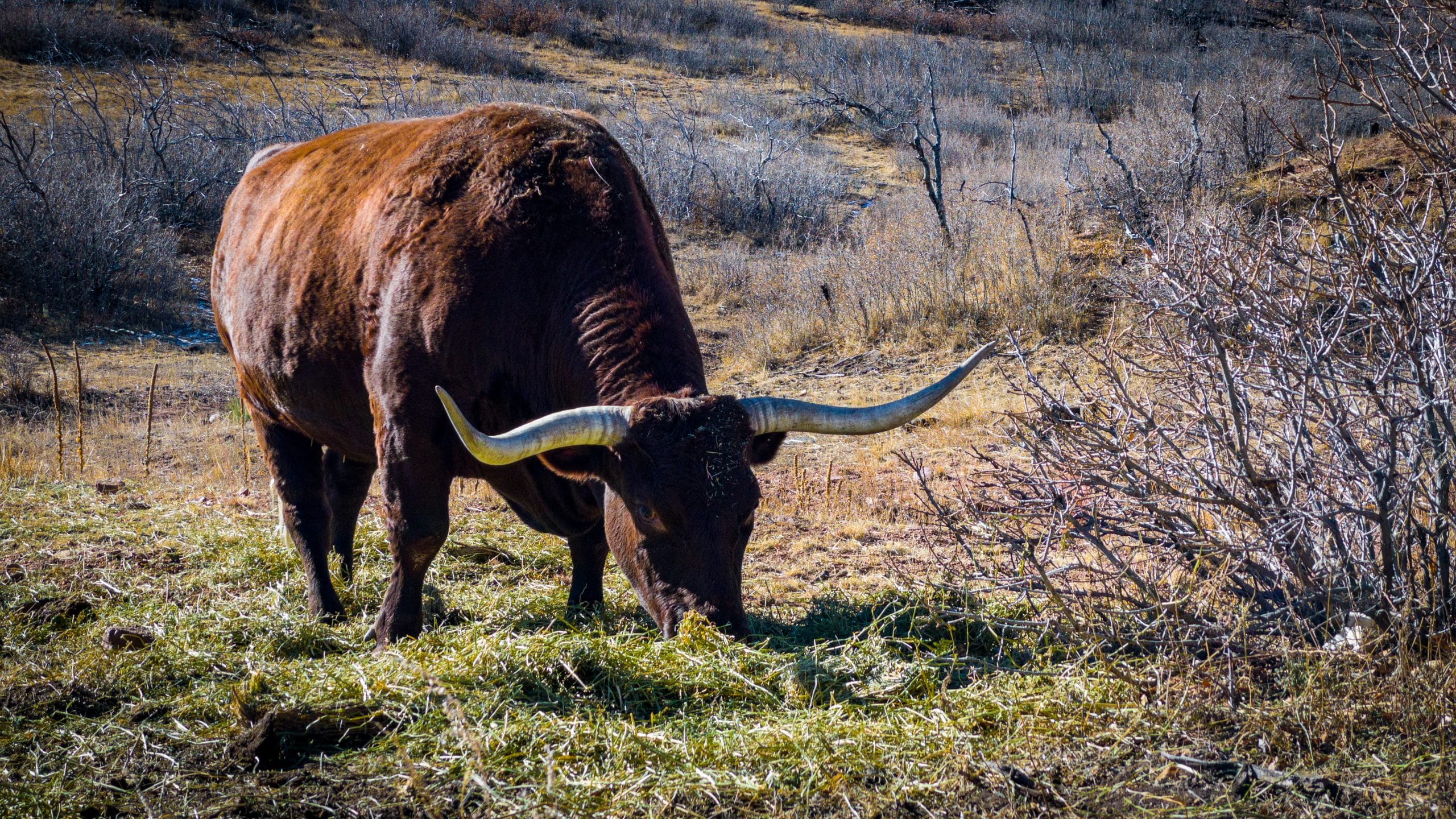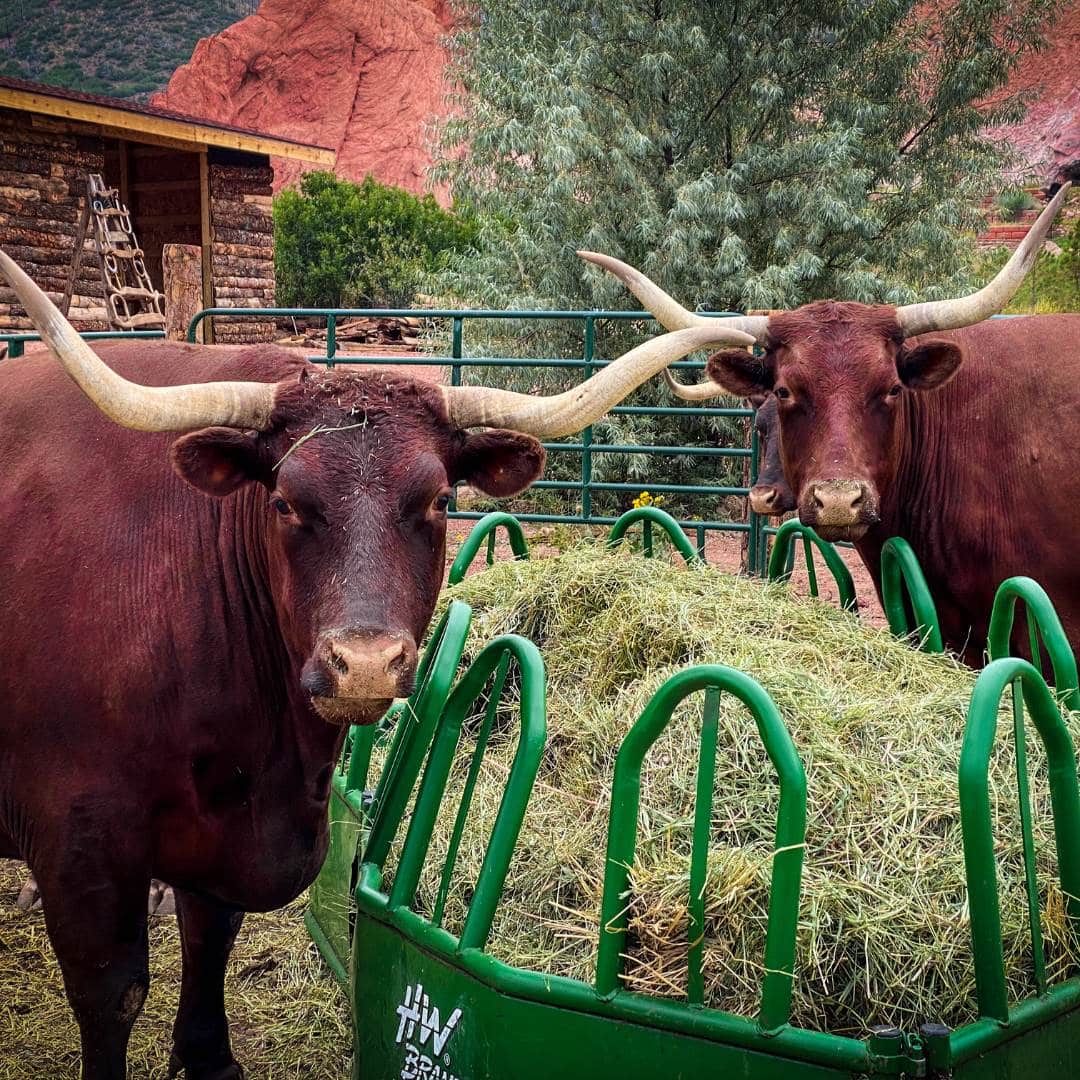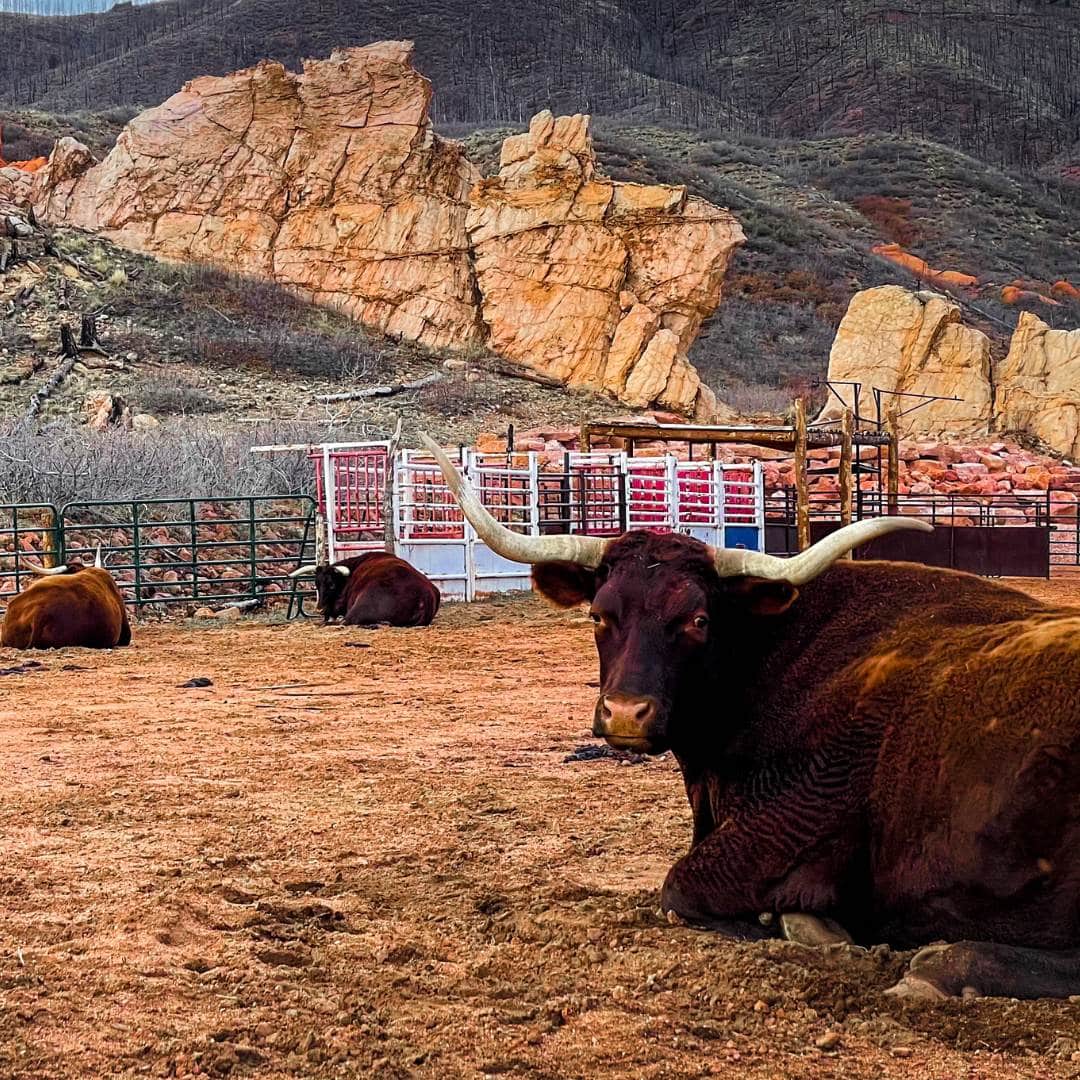
Save the Devon

Survival or Extinction – The American Milking Devon Cattle
The Westward Expansion of the 1840’s and 1850’s was made possible largely due to the American Milking Devon Cattle breed of oxen. For a variety of reasons, this breed of oxen made it possible for early frontier settlers to travel long distances and farm the hard soil needed to settle the West. This beautiful and historic breed is currently on The American Livestock Breeds Conservancy list as critically endangered.
We have these oxen at the Flying W Ranch and use them in authentic exhibits of Western life. We believe in giving back to support the heritage of the West and the institutions that are the very foundation of the American way of life. We prioritize excellence in our event and entertainment services as well as being purpose-driven leaders in serving our country in a way that tangibly impacts lives. That’s what is at stake for a true pillar of the West, and the Flying W Ranch is committed to saving this important part of Western Heritage.
More Than Oxen; An American Tradition
American Milking Devon Cattle
The American Milking Devon Cattle have a rich history that dates back to the 17th century. The breed was brought to America by English settlers and quickly became a staple in the New England region. In 1661, the Pilgrims arrived in Plymouth Rock without a single head of cattle. For two years, they did without until cattle became a necessity. The Pilgrims needed triple-purpose cattle – for milk and meat and for work. In 1633, the King of England sent three American Milking Devons (two cows and one bull) to Plymouth Colony.
These cattle were highly valued for their ability to produce milk and their versatility in farm work. They played a crucial role in the development of the American dairy industry and were even used as draft animals for plowing fields and hauling heavy loads.
When the westward expansion began in the 1840s and 1850s, moving an estimated 400,000 people on the Oregon, Mormon, California, and Santa Fe Trails was made possible largely due to the use of oxen. The American Milking Devon oxen were often the oxen of choice. Oxen could eat as they walked, making for fewer stops on the trail. Alternatively, if horses were used to pull the caravans of wagons, a large quantity of feed had to be hauled.

A Critically Endangered Species
Today the American Milking Devon oxen are listed as a critically endangered species by the American Livestock Breeds Association. The decline in their population can be attributed to several factors including the rise of industrialized farming and the demand for high-yielding dairy breeds. Furthermore, the mechanization of agriculture reduced the need for working cattle, further diminishing their numbers. The breed’s vulnerability to diseases and parasites also contributed to their decline.
Milking Devons are calm, friendly, and very intelligent. Milking Devons make excellent oxen and are highly prized by teamsters. They are fast walkers and strong for their size. Milking Devons are also known for their adaptability to new environments.
Preserving the history of the American Milking Devon Cattle is crucial to protecting the agricultural heritage of the West. To conserve this endangered breed, raising awareness about the breed and its historical significance is essential. This can be done through educational programs, farm tours, and public exhibitions, such as the one at the Flying W Ranch. By preserving the gene pool and encouraging responsible breeding practices, we can ensure that the legacy of the American Milking Devon Cattle continues for future generations.
